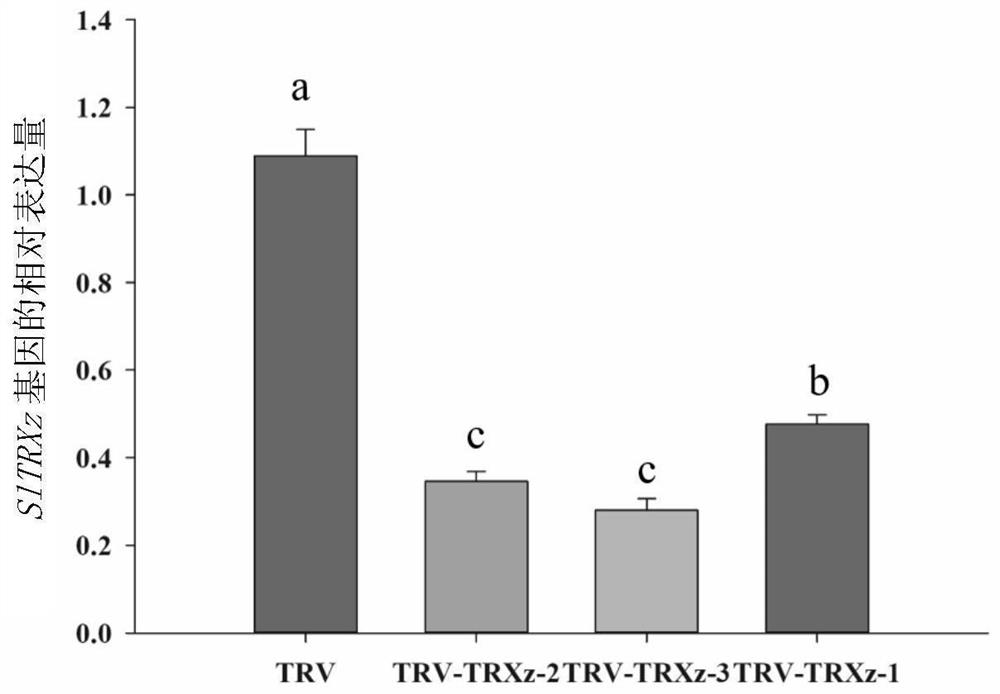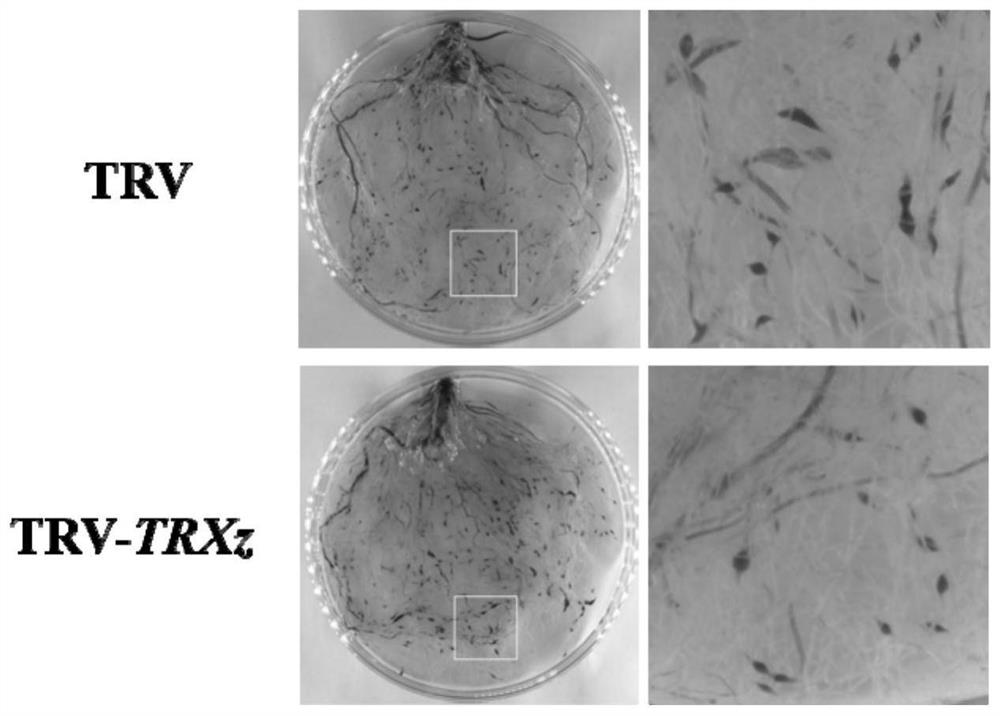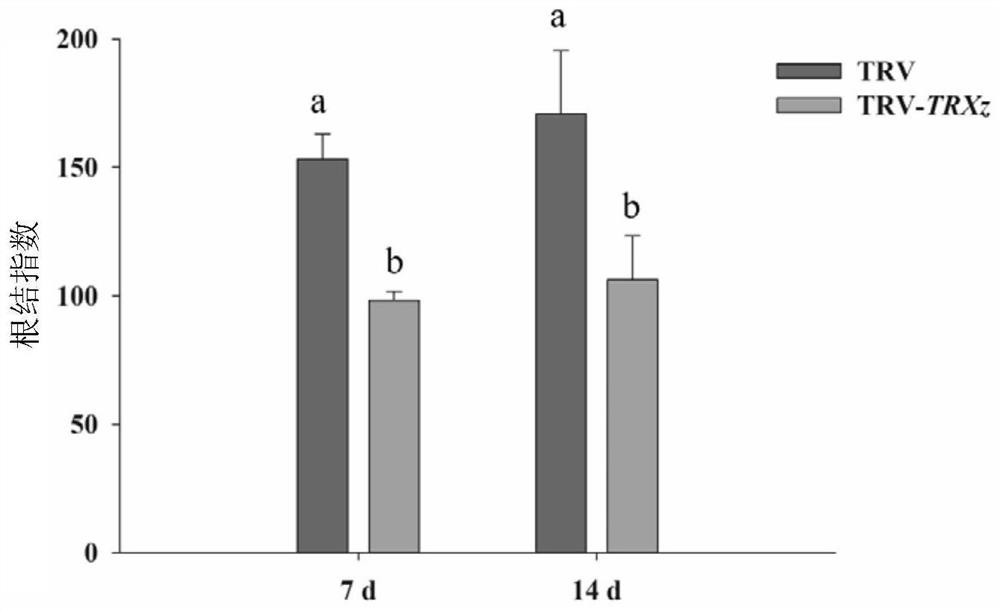Application of solanum lycopersicum SlTRXz gene as restraining target to defence of meloidogyne incognita
A root-knot nematode and gene technology, applied in the fields of application, genetic engineering, and botanical equipment and methods, can solve problems such as affecting plant growth and damage, and achieve the effects of increasing yield, reducing root-knot index and improving resistance.
- Summary
- Abstract
- Description
- Claims
- Application Information
AI Technical Summary
Problems solved by technology
Method used
Image
Examples
Embodiment 1
[0047] Embodiment 1, silencing tomato SlTRXz gene
[0048] 1. Construction of VIGS recombinant vector
[0049] Insert the double-stranded DNA molecule shown in the 109th-407th nucleotides in Sequence 2 of the sequence listing between the XbaI and SmaI restriction sites of the pTRV2 vector to obtain the recombinant plasmid pTRV2-SlTRXz. Recombinant plasmids have been verified by sequencing.
[0050] Insert the double-stranded DNA molecule shown in Sequence 4 of the sequence listing between the XbaI and SmaI restriction sites of the pTRV2 vector to obtain the recombinant plasmid pTRV2-PDS. Recombinant plasmids have been verified by sequencing. The double-stranded DNA molecule shown in Sequence 4 of the sequence listing is a PDS gene fragment and serves as a quality control indicator. PDS is phytoene dehydrogenase, whose expression is inhibited, which will lead to a large accumulation of colorless phytoene, which will lead to a significant decrease in the synthesis of chloroph...
PUM
| Property | Measurement | Unit |
|---|---|---|
| molecular weight | aaaaa | aaaaa |
Abstract
Description
Claims
Application Information
 Login to View More
Login to View More - R&D
- Intellectual Property
- Life Sciences
- Materials
- Tech Scout
- Unparalleled Data Quality
- Higher Quality Content
- 60% Fewer Hallucinations
Browse by: Latest US Patents, China's latest patents, Technical Efficacy Thesaurus, Application Domain, Technology Topic, Popular Technical Reports.
© 2025 PatSnap. All rights reserved.Legal|Privacy policy|Modern Slavery Act Transparency Statement|Sitemap|About US| Contact US: help@patsnap.com



